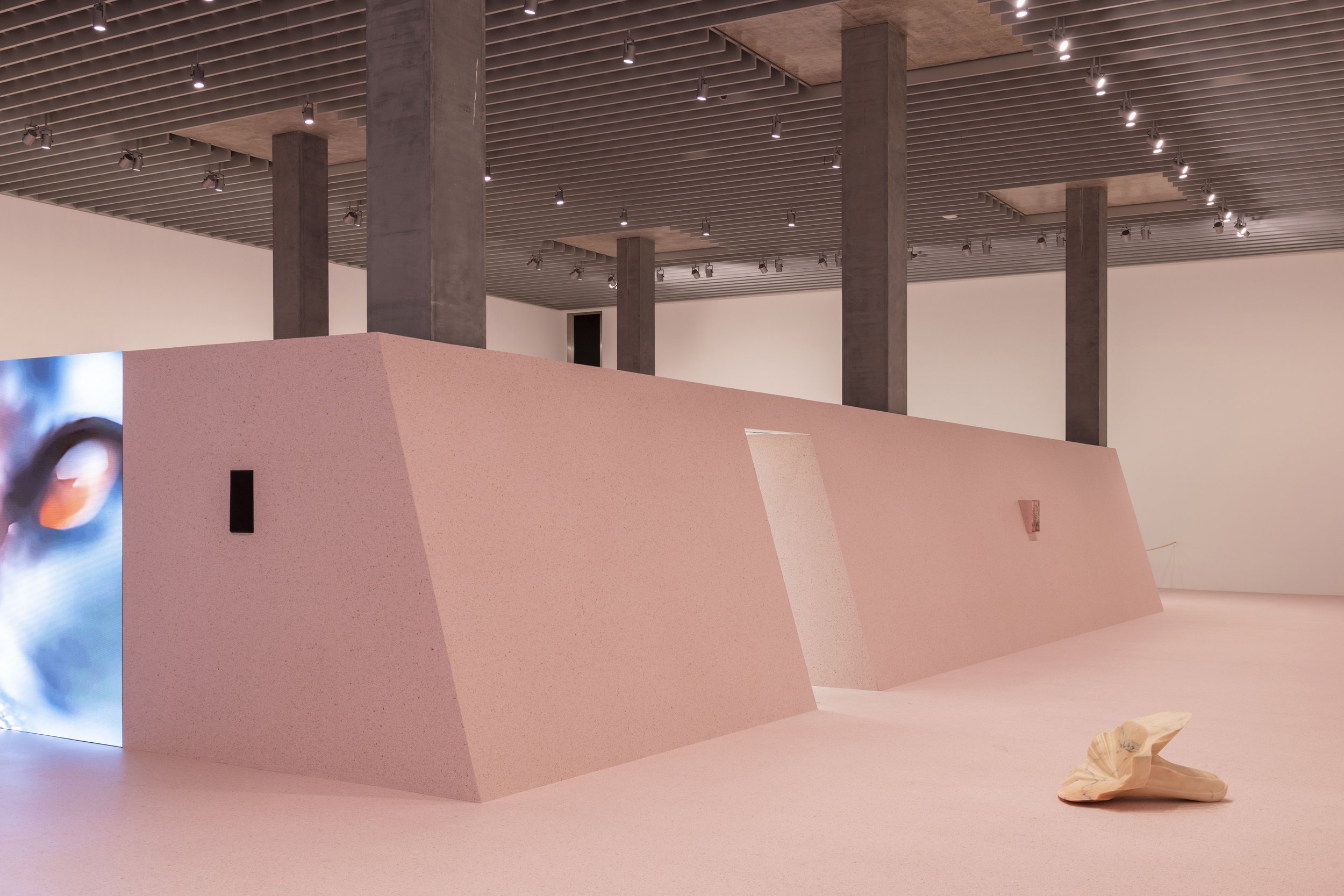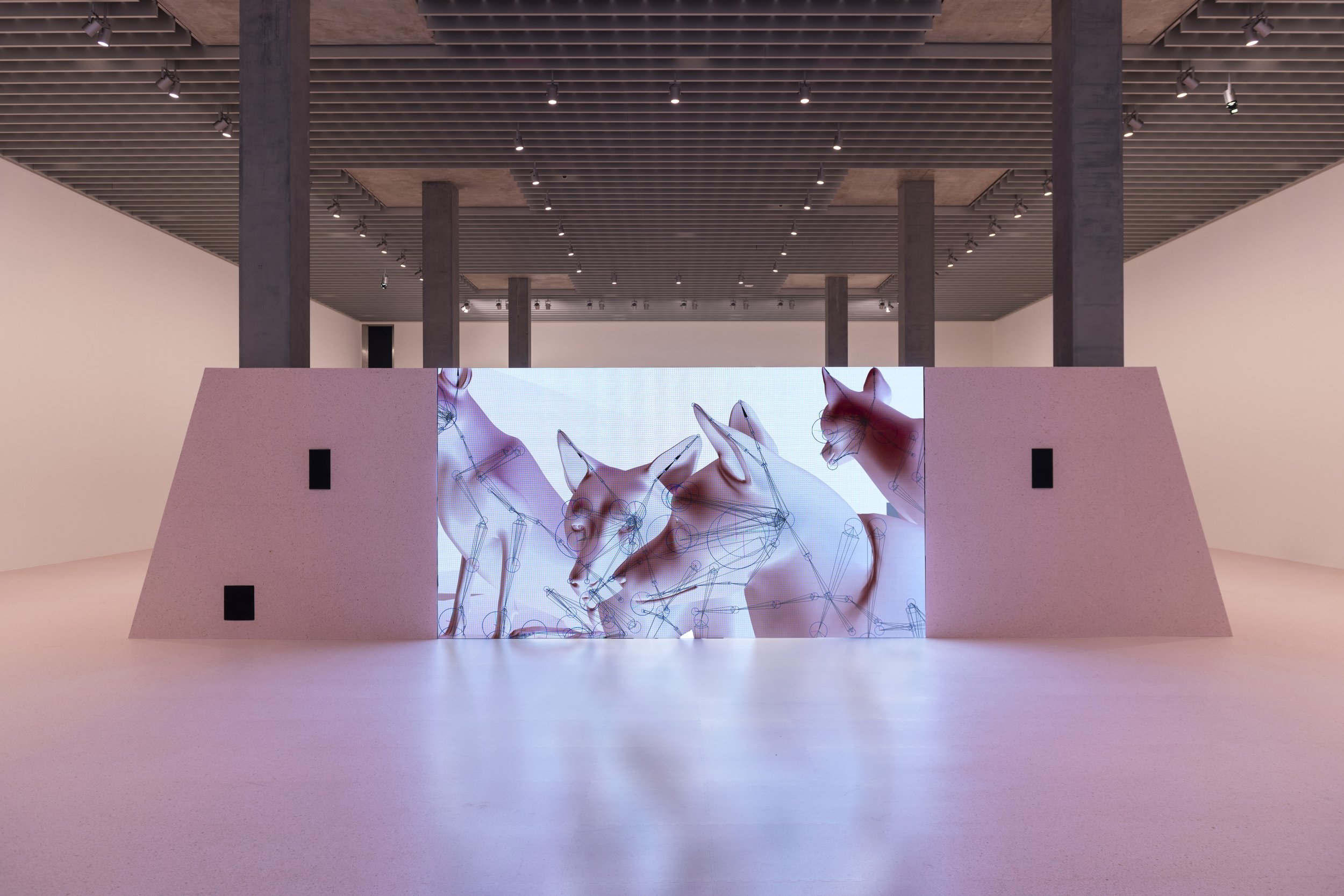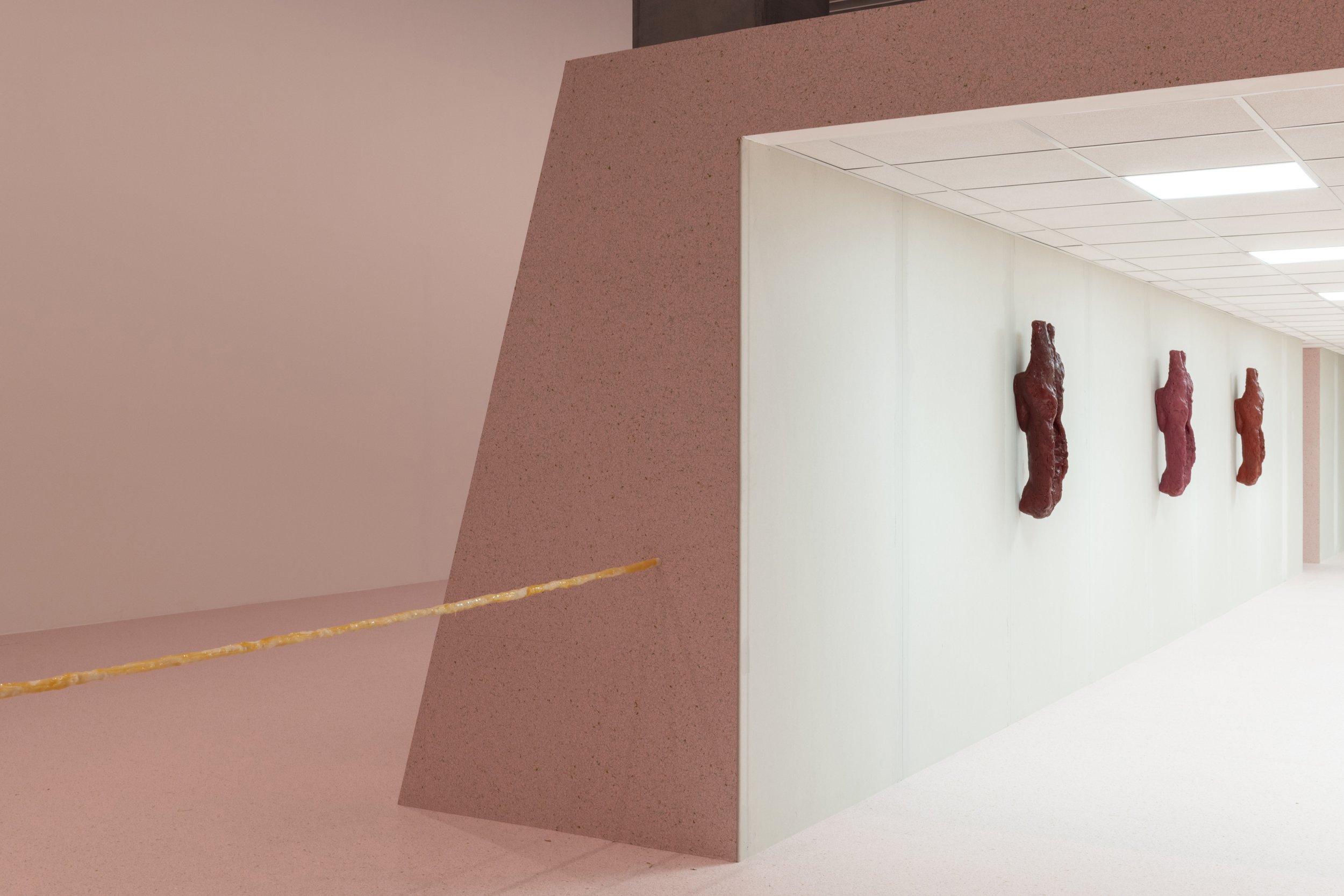
Streams of Spleen
Words by Rebecca Jones

“No one leaves home without being wounded” was the impetus for the Geneva-born artist Shahryar Nashat’s latest exhibition, Streams of Spleen. Transforming a fist-sized organ, biologically constructed to fight harmful bacteria, into an alliterative title that comments upon the assimilated and pre-established prestige of art, is remarkable.
Nashat’s art lacks assertiveness: it does not judge nor does it attempt to provide interpretations on our predisposed perceptions. With the evolution of figurative art that deconstructs the aesthetics of involuntary intuition, Nasat permits an exploration of what it means to be a body, constructed by flesh and matter.
Highlighting a diverse collection of art configurations, the underground hall of Museo d’arte della Svizzera italiana has been cultivated into a multisensory environment, evoking an aura of unease and fascination for his spectators- a blinding slash of baby pink, vinyl tiles girdling its walls, adjacent to the ominous matrix-esque bunker centring the room.
The six carcass-like sculptures strung up on the wall are oddly reminiscent of an abattoir, while the virtuoso renditions of carcasses in 17th century still-life imitations arouse both desire and disgust towards the artistic matter, akin to the voyeurism of the disturbia of a psychiatric asylum.

In the fiberglass sculptures Boyfriend_14.JPEG, Boyfriend_15.JPEG, and Boyfriend_16.JPEG, carnality is fused with geometric structures by blending the pigmentation of muscular and skeletal tissue. As much as I was uneased by its realistic qualities, I was saddened by them: I found myself sympathising with an inanimate object.
Can genderless blocks of flesh be pitied for their fate as dancing monkeys for spectators? There is an attraction to a deeper understanding of the effect - evoking emotions we have already felt, what we want to understand, but we are forced to remain in uncertainty, leaving us suspended in uneasiness.
The looping video “Warnings” is the beating heart of the show. In this work, which features digital footage of wolves and those filmed in their natural habitat, Shahryar Nashat urges us to move away from the human-centric perspective of the world and instead revert to primal instincts. Vulgarity and vitality, a sense of unease remains. It is reinforced by its soundtrack: a panting that turns into a symphony of howls and laments that then become electronic music with a fast beat. Is this a warning?
A mourning for the loss of a bond? The wolf symbolises a mix of power, loyalty, guardianship, teamwork and wildness. Wolves are viewed as intuitive with an almost supernatural instinct, however, they need a pack to succeed within the foundation of cooperative living.
In his attempts to contemplate humanity in its most base and raw forms, Nashat grapples with the boundaries between the intricacies of the human mind and the biological facets of the body and, in doing so, evidences an unbridled desire to not only understand his own “wounds” but for his audience to understand theirs.





